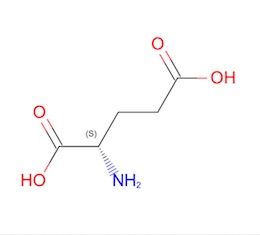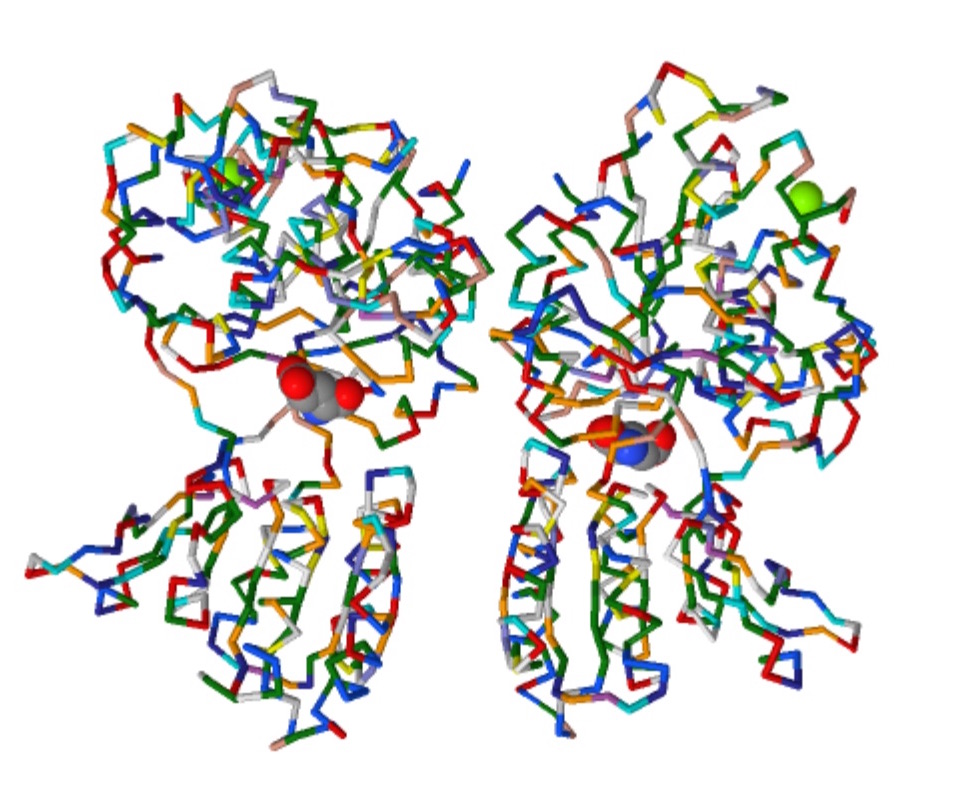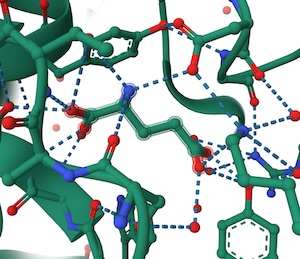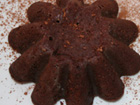Science of Umami -- The Fifth Taste
Origin of Umami Taste
While the use of Umami as a fifth taste seems relatively new it has been known for a long time. In 1908, the active ingredient of seaweed kombu was identified as glutamate by Ikeda (On a new seasoning: K Ikeda - J. Tokyo Chem. Soc., 1909). Ikeda identified the unique taste component of kombu (kelp) as the salt of glutamic acid and coined the term umami (Japanese for "yummy") to describe this taste. You may be familiar with MSG (monosodium glutamate) which is the synthetic form of glutamate. Note: Monosodium glutamate (MSG) is the sodium salt of the common amino acid glutamic acid.
Shown below (Glutamic Acid)

After Ikeda’s discovery, other umami taste substances, such as 5' inosinate and guanylate, were identified which bind to a separate part of the umami receptor (-the human T1R2/T1R3 receptor).see -Xiaodong Li, et.al. 2002 PNAS Human receptors for sweet and umami taste.
Abstract: "...The three members of the T1R class of taste-specific G protein-coupled receptors have been hypothesized to function in combination as heterodimeric sweet taste receptors. Here we show that human T1R2/T1R3 recognizes diverse natural and synthetic sweeteners. In contrast, human T1R1/T1R3 responds to the umami taste stimulus l-glutamate, and this response is enhanced by 5′-ribonucleotides, a hallmark of umami taste. The ligand specificities of rat T1R2/T1R3 and T1R1/T1R3 correspond to those of their human counterparts. These findings implicate the T1Rs in umami taste and suggest that sweet and umami taste receptors share a common subunit...."
In humans, the response to the mixture of glutamate and 5′-inosinate is about 8 times larger than that to glutamate alone. Since glutamate and 5′-inosinate are contained in various foods, we taste umami induced by the synergism in daily eating. Hence umami taste induced by the synergism is a main umami taste in human. see: Umami the Fifth Basic Taste: History of Studies on Receptor Mechanisms and Role as a Food Flavor
Molecular Structure
Structural basis of glutamate recognition by a dimeric metabotropic glutamate receptor. Kunishima, N., Shimada, Y., Tsuji, Y., Sato, T., Yamamoto, M., Kumasaka, T., Nakanishi, S., Jingami, H., Morikawa, K. (2000) Nature 407: 971-977

Dimeric Glutatamate Receptor Heterodimer (T1R1-T1R3) with bound GLU701 and GLU702.
see 3D structure at pdb:1EWK
Note: All images above and below made using the Jsmol Viewer on the RCSB PDB site.

Glutamate bound to pocket (above)
See: Nature 407: 971-977
"...Crystal Structure of a dimeric metabotropic glutamate receptor ..The structures imply that glutamate binding stabilizes both the 'active' dimer and the 'closed' protomer in dynamic equilibrium. Movements of the four domains in the dimer are likely to affect the separation of the transmembrane and intracellular regions, and thereby activate the receptor..." Nature 407: 971-977
Origins of umami receptor in humans
"...A study suggests that mutations in the gene that encodes the T1R1/T1R3 taste receptor allowed primates that relied on insects for protein to transition to eating leaves and fruit..."...Researchers showed that the receptor evolved in humans and some other primates away from mostly binding free nucleotides, which are common in insects, to preferentially binding glutamate, which is abundant in leaves. The authors argue that the change facilitated a major evolutionary shift in these primates toward a plant-heavy diet...See: Umami Taste Receptor Evolved with Primates’ Diets
Not everyone tastes umami with the same intensity
There is substantial inter individual taste sensitivity variability. For instance, detection thresholds for MSG have been reported to follow a multimodal distribution in the French population, with 2% of the population displaying a specific inability to taste MSG see Human Genetic Polymorphisms in T1R1 and T1R3 Taste Receptor Subunits Affect Their Function and references therin. As with the taste of bitter, It has been known for many years that some people are extremely sensitive to the taste of bitter substances, while others perceive little or no bitter taste.--- supertasters and nontasters exist for bitter and to a leser extent to umami taste.... see Super-Tasters and Non-Tasters: Is it Better to Be Average?
A Sixth Taste?
In November 2005, it was reported that a team of French researchers experimenting on rodents claimed to have evidence for a sixth taste, for fatty substances. Investigator Philippe Besnard and his team believe the CD36 receptors that they found on rodents, were important for evolutionary reasons - to ensure animals ate a high energy diet when foods were scarce. It is speculated that humans may also have the same receptors. Fat has occasionally been raised as a possible basic taste since at least the 1800s. Read more...
See: Umami Rich Foods and Recipes
Science of Cooking
See also:
- Science of Saffron
- Science of Food Dehydrators
- Science of Culinary Foams
- Science of zucchini blossoms
- Science of Brining
- Science of cooking mashed potatoes
- Science of hot sauces -- most popular brands
- Science of Cornmeal and Polenta
- Science of Onions
- Science of Cooking with Lentils
- Science of Brown Butter Sauce
- Science of Cast Iron Cooking
- Science of Hydrocolloids in Cooking
- Science and Health Benefits of Ginger
- Science of Cooking with Eggs
- Science behind perfect French Omelette
- Science of Food and Wine Pairing
- Science of Wine Aromas
- Science of Slow Cooking (Meats)
- Science of Chocolate
- Science behind pulling the perfect espresso shot
See Also: Umami Rich Foods and Recipes
About Chocolate

What are the health benefits of Chocolate?
What are the drugs in Chocolate?